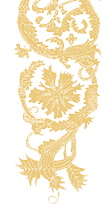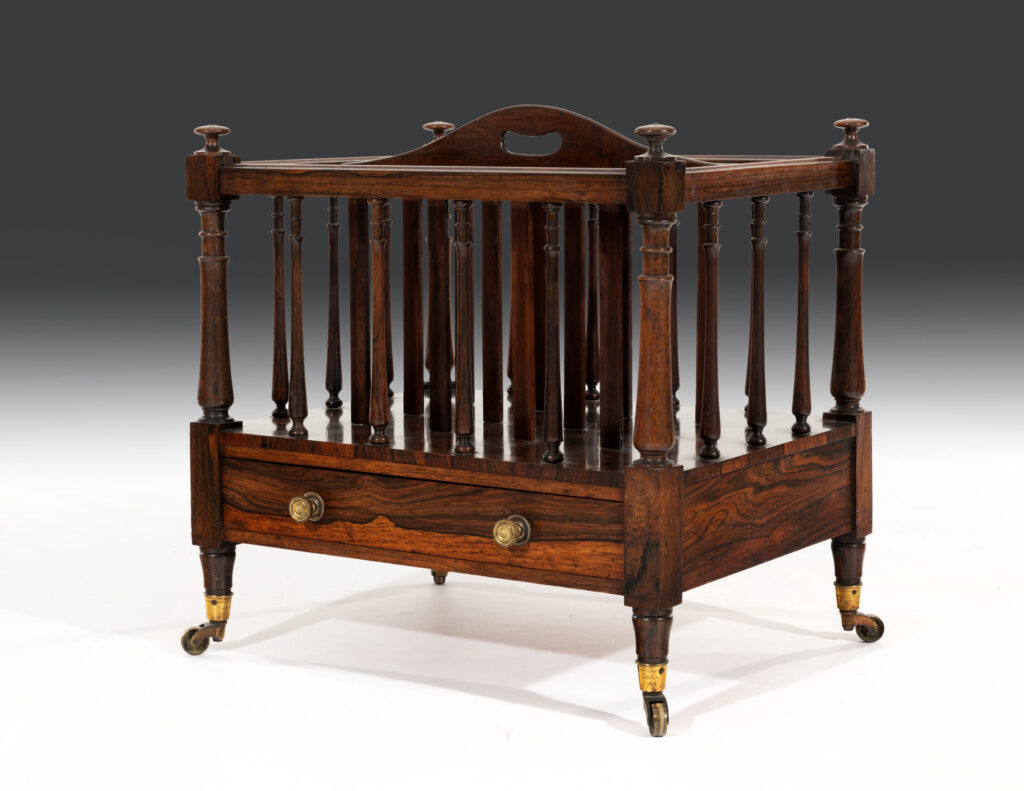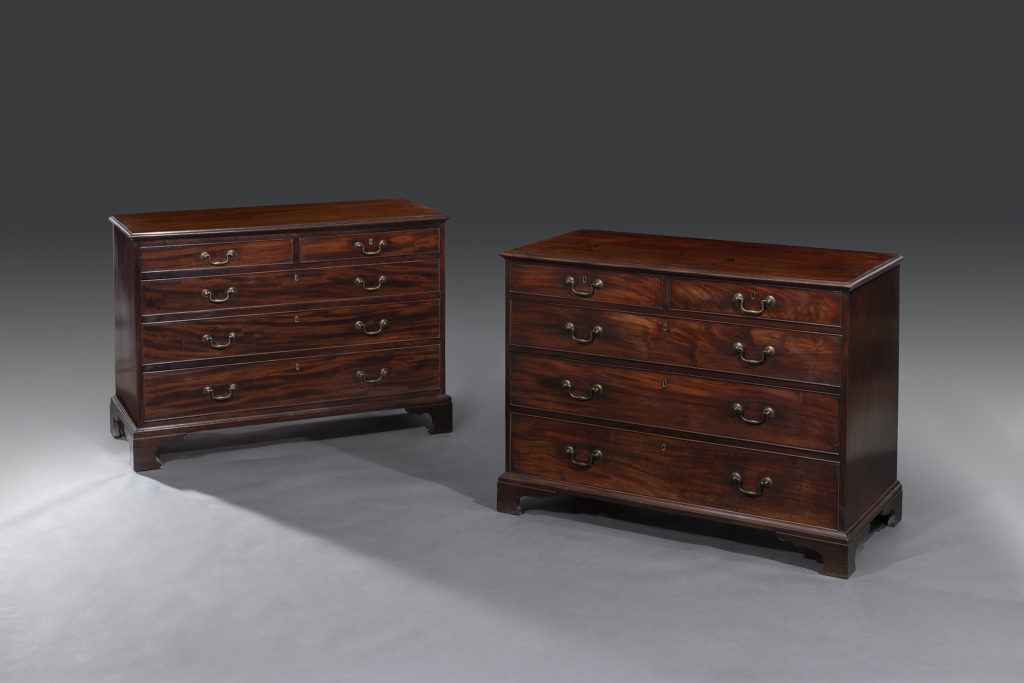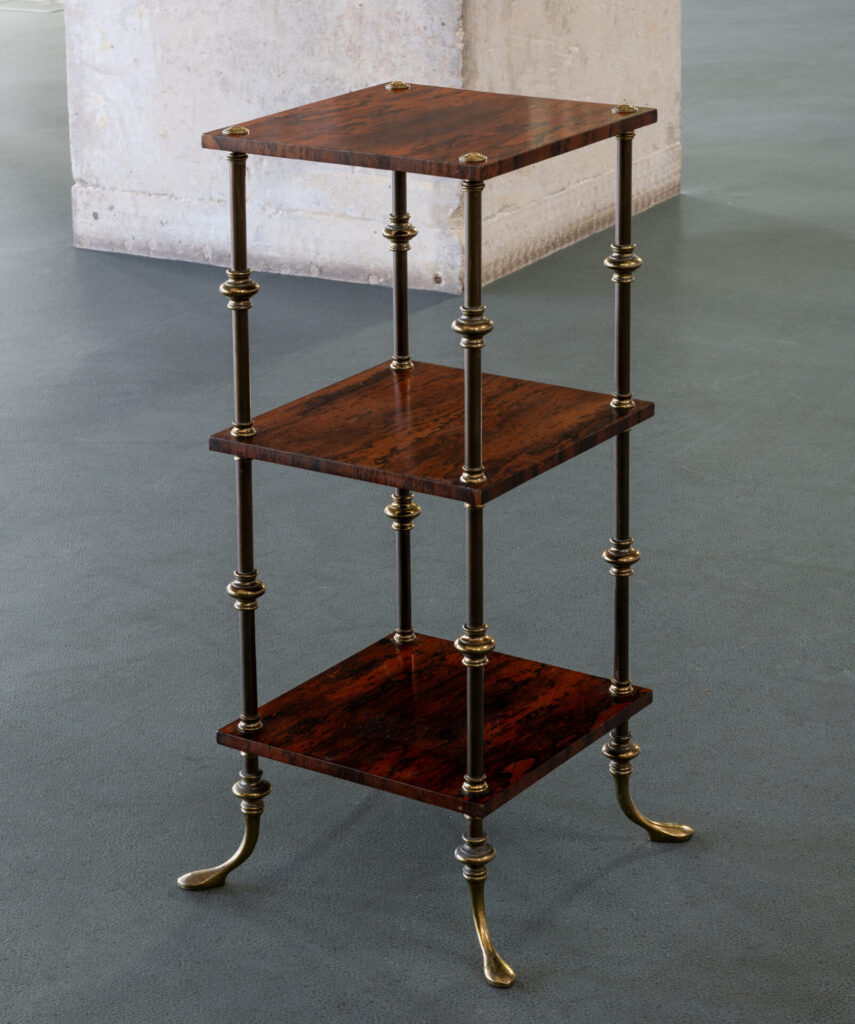Partridgewood Tambour Cabinet
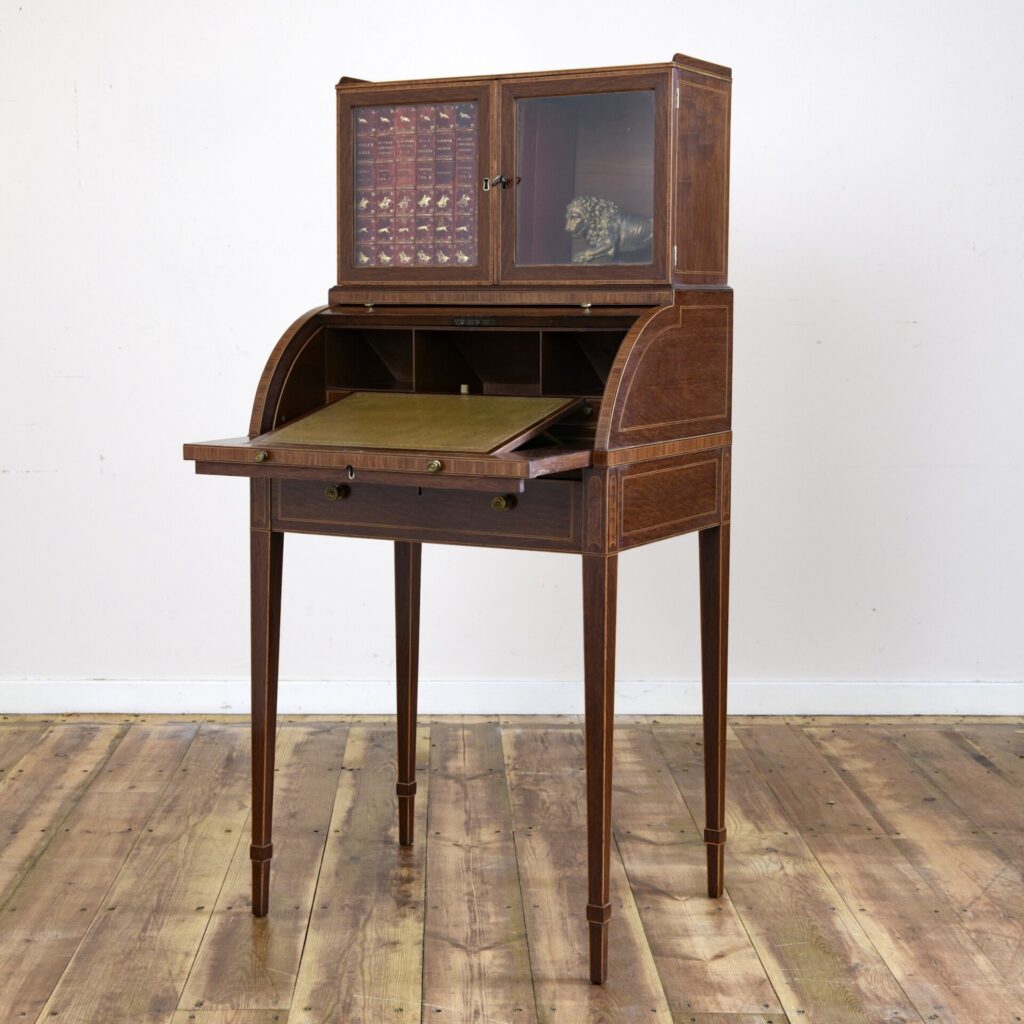
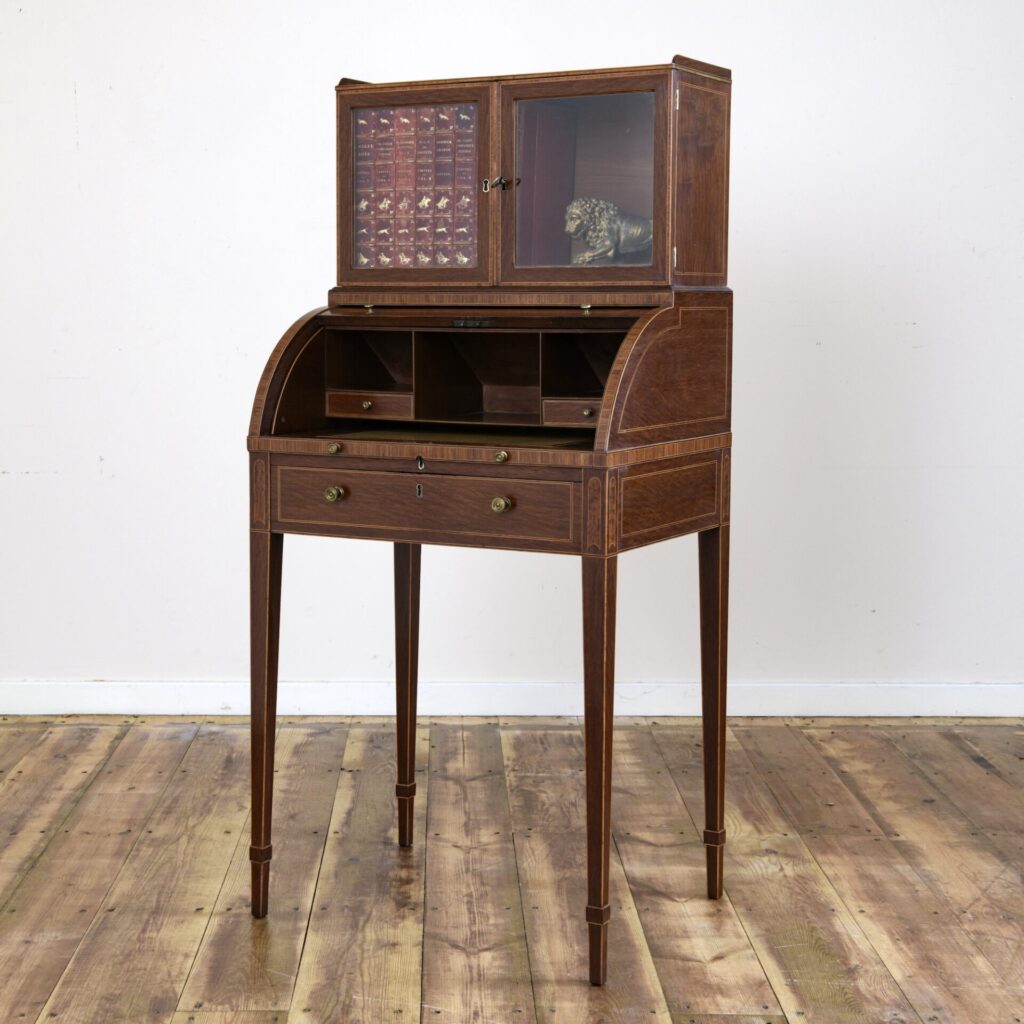
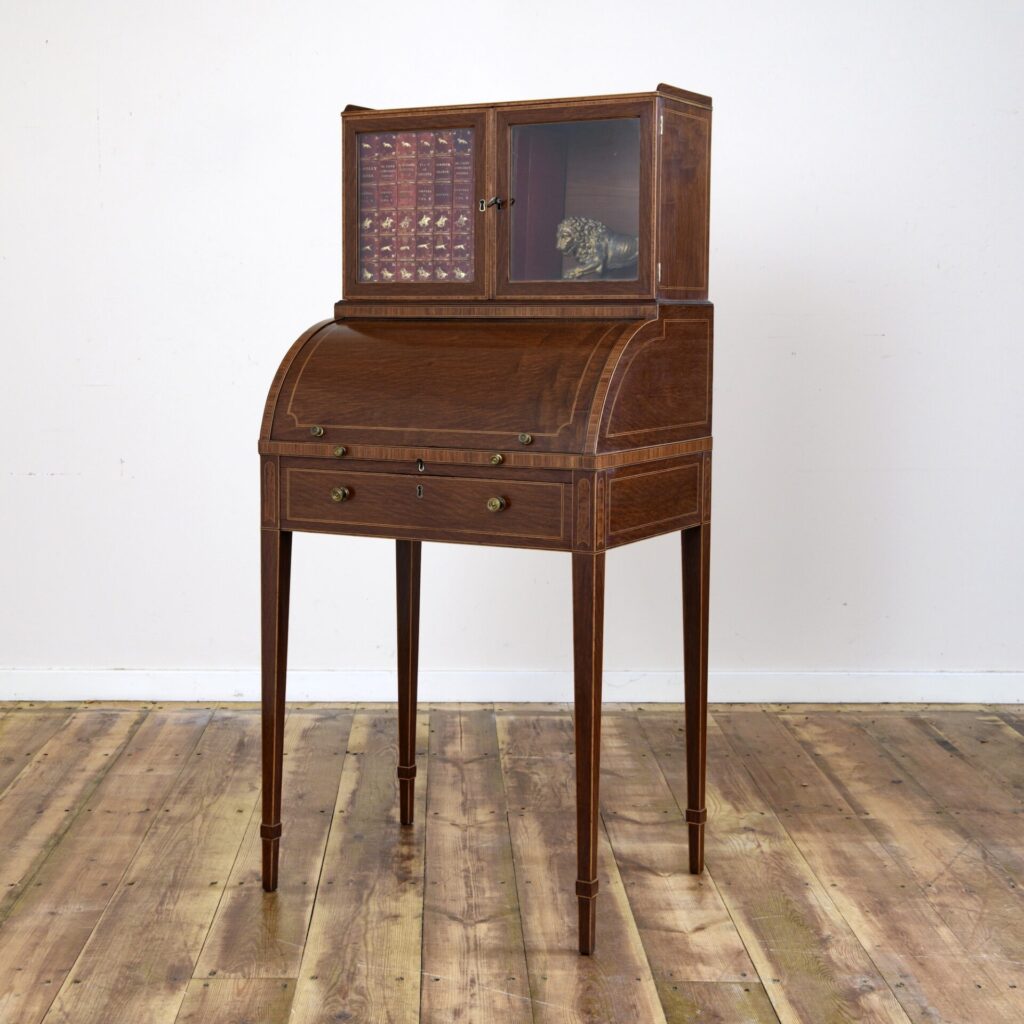
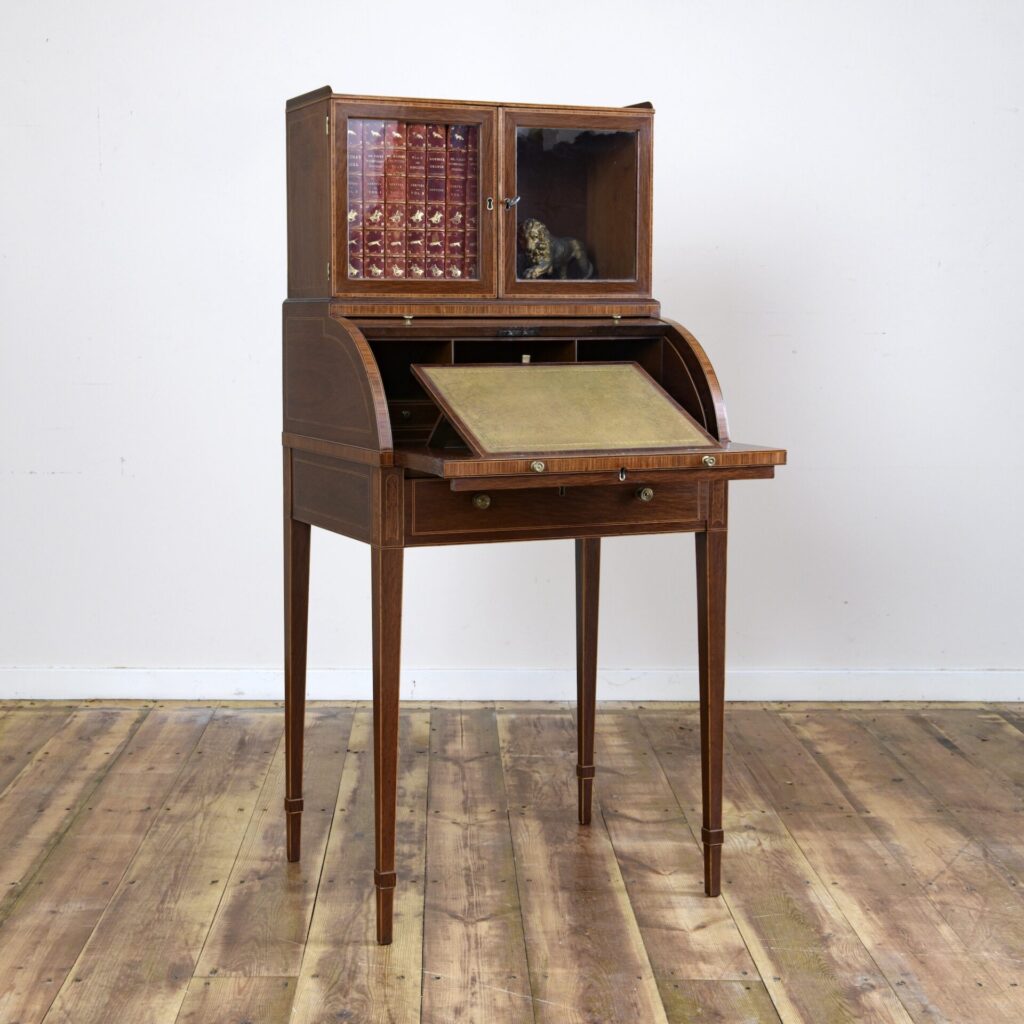
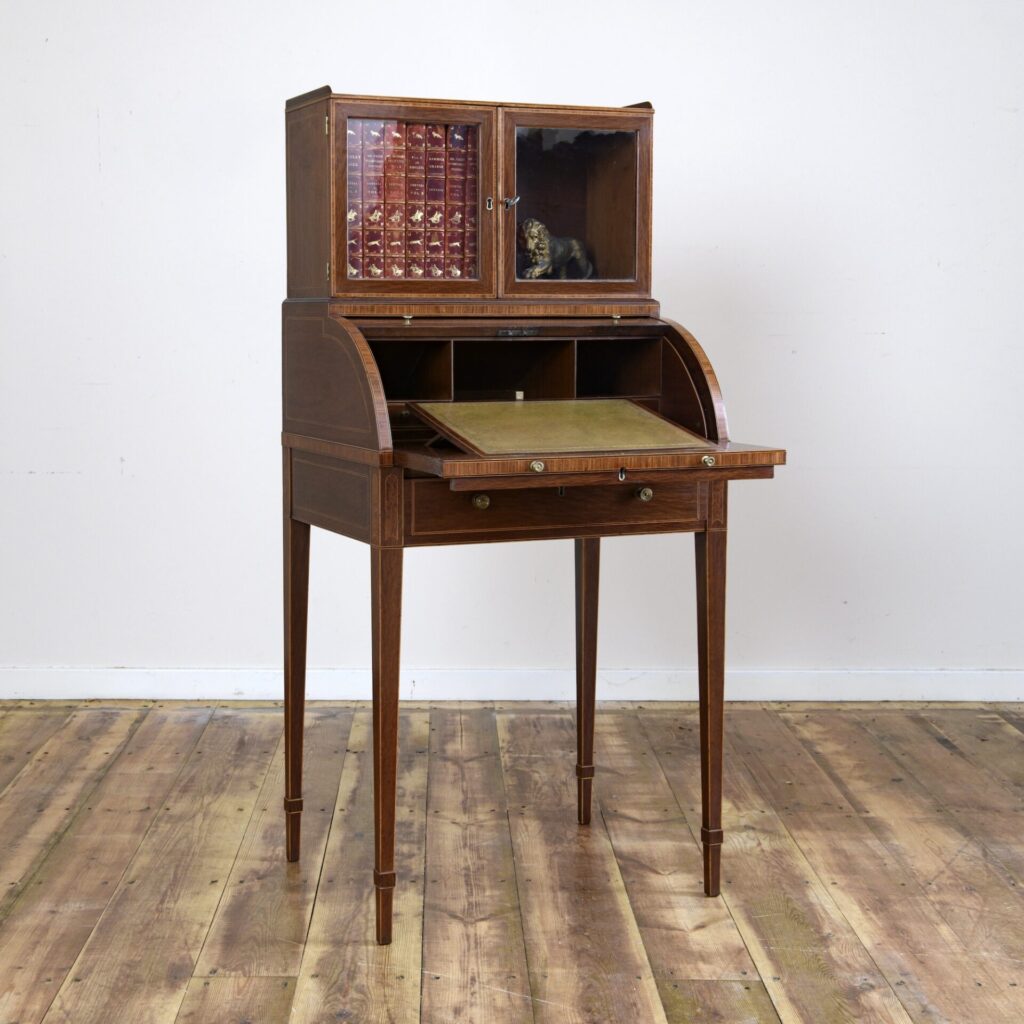
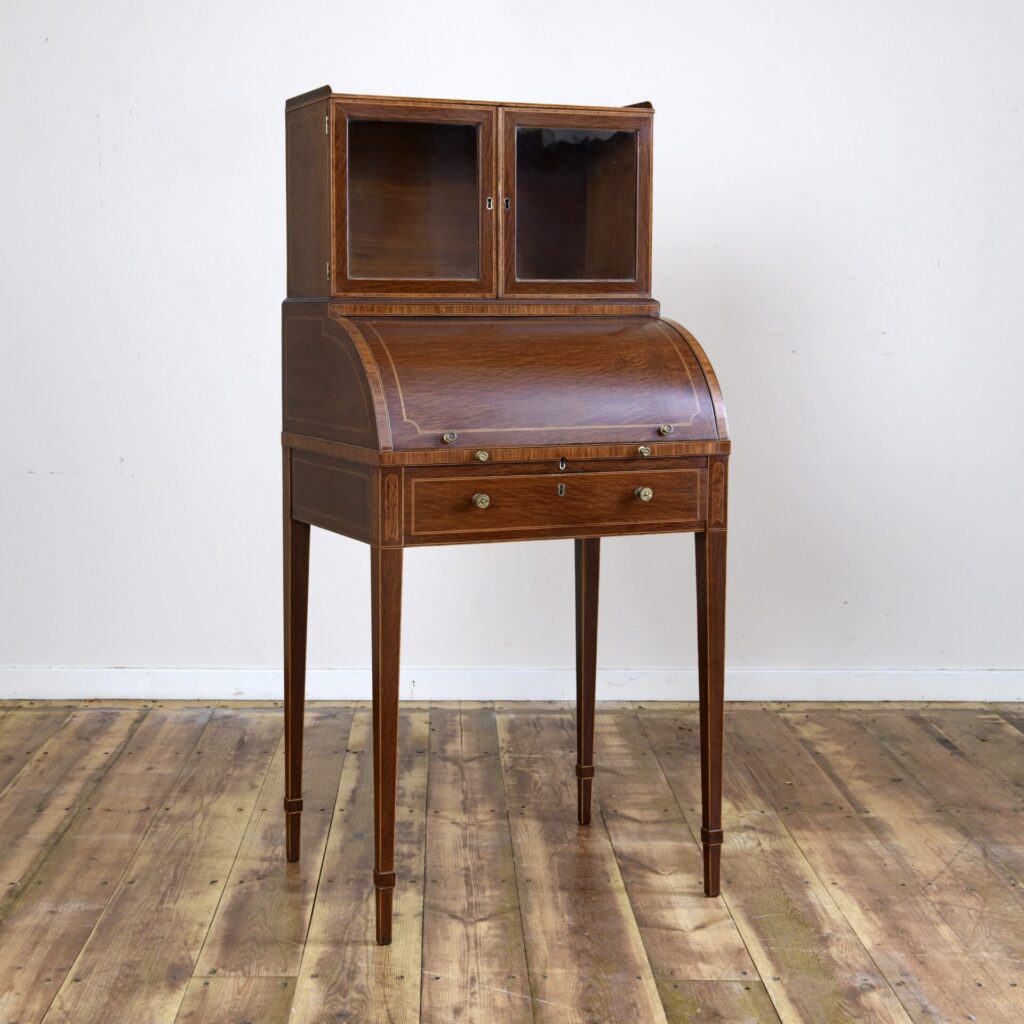

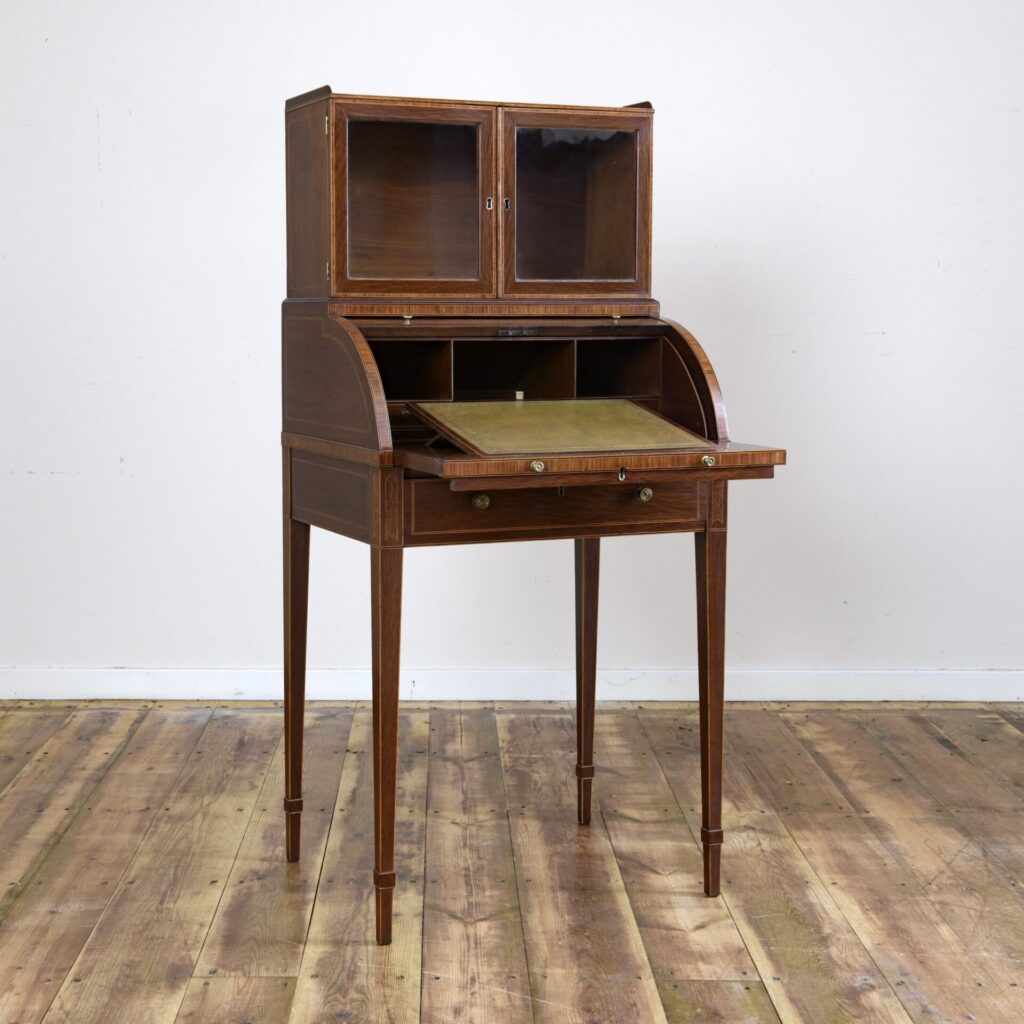
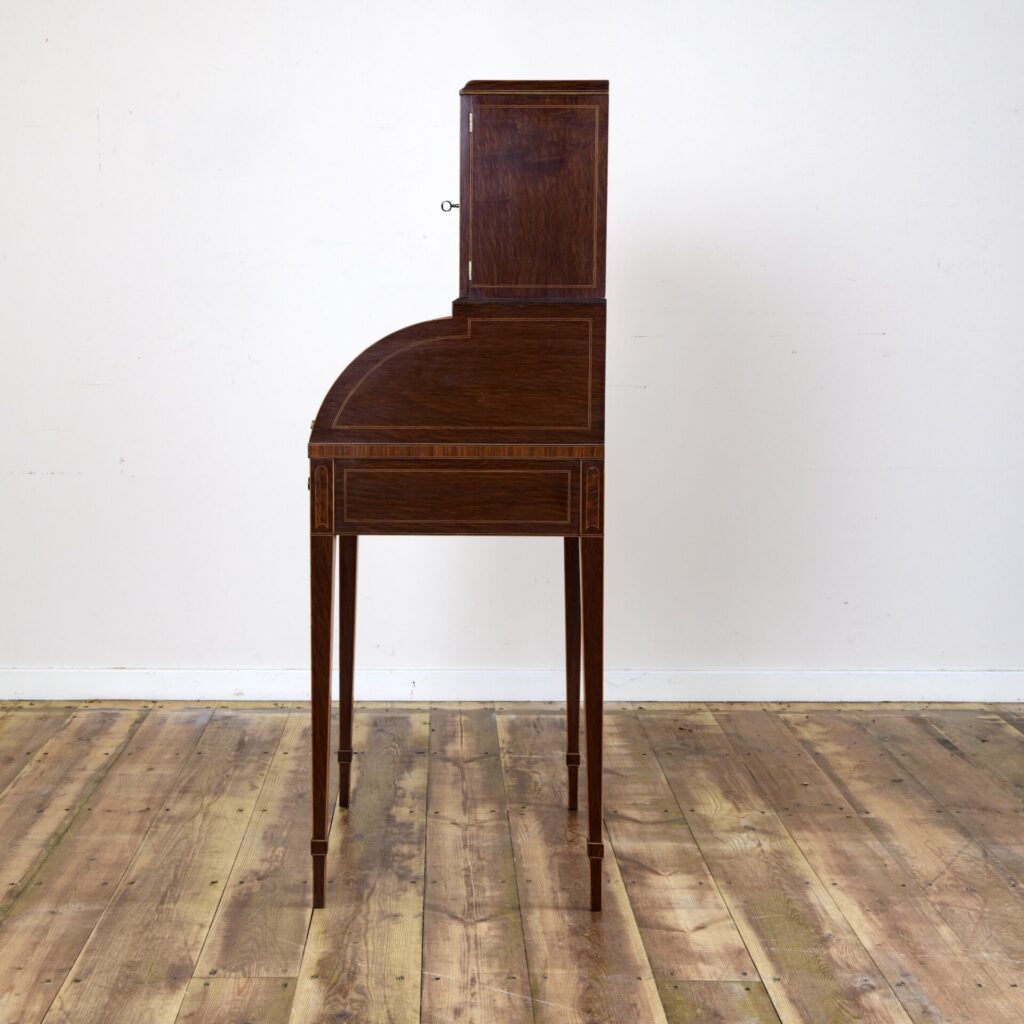
Partridgewood Tambour Cabinet
English
circa 1800
Late George III Sheraton period inlaid cylinder partridgewood tambour writing cabinet.
The cabinet opens to reveal pigeon holes and cedar and ash lined drawers and a pull-out adjustable leather lined writing slope. The upper section with a three-quarter gallery above two small glazed doors enclosing an interior top section integrated to the cabinet.
The partridgewood is crossbanded with tulipwood and ebony and boxwood stringing throughout. The secretaire is outlined with a wide tulipwood crossbanding above a cedar and ash lined frieze drawer.
The drawer is stamped with the maker's stamp and impress mark: ‘WILKINSON LONDON LUDGATE HILL'.
The cabinet is raised on finely tapered legs that have been veneered in partridgewood and inlaid with boxwood stringing above mahogany inlaid motifs framed in boxwood.
Condition
Excellent
Literature
William Wilkinson, 14 Ludgate Hill, London, had formerly been a partner with Thomas Wilkinson at Brokers Row, Moorfields, but the partnership broke up after 1807 and by 1808 William was trading on his own account at Ludgate Hill.
In 1829 they were commissioned by the architect John Rennie to make a table which he presented to the Earl of Lonsdale at Lowther Castle and from 1833-1834 made furniture for the Goldsmiths Hall, London, to the designs of the architect Philip Hardwick.
The firm appear to have adopted a policy of stamping their products from a wide range of furniture in the Regency style. It has been noted that variations of stamps including ‘Wilkinson, Ludgate Hill’, and ‘Wilkinson & Sons, 14 Ludgate Hill’, appear on various sofa tables, breakfast tables, extending dining tables and occasional furniture.
See Dictionary of English Furniture Makers 1660-1840, pg. 978
Dimensions
Height 121.92cm (48 inches)
Width 54.61cm (21.5 inches)
Depth 43.18cm (17 inches)
Stock No: 11686
£3,950.00
In-stock